Jupiter and its Moons
July 4, 1996
Captured by Sean, Ottawa
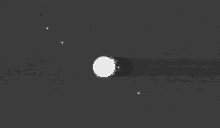
These images were captured using an Astrovid video camera connected to our 8", Bausch & Lomb, Schmidt Cassegrain, telescope. The camera is a black & white, high resolution, .03 lux video camera. The images were digitized using a video capture board on a PC. Some images were captured directly from the camera, others from video tape after a viewing session.
For Astrovid Camera information, contact Adirondack Video Astronomy .
Jupiter and its Moons
July 4, 1996
Captured by Sean, Ottawa

Of Jupiter's main satellites (moons), four are easily viewed with a telescope. These four moons are called the Galilean Satellites after the astronomer Galileo. Galileo discovered them in the year 1610. He named them Io, Europa, Ganymede and Callisto. The everchanging arrangements of these moons is a result of their rapid movement around the planet. Their orbital periods (time for one orbit) are:
Io - 1.8 days, Europa - 3.6 days, Ganymede - 7.2 days, Callisto - 16.7 days
Mizar & Alcor
July 5, 1996
Captured & enhanced by:
Cameron, Toronto
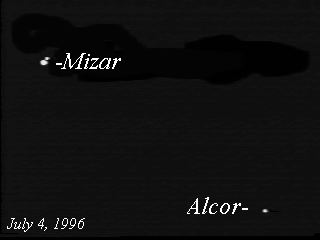
This star system is found in the handle of the Big Dipper. The stars Mizar and Alcor are visible to the unaided eye. The dimmer star, close to Mizar, is named Mizar B, these two stars form a double star system, they orbit each other. The distance between Mizar and Mizar B is 50,000,000,000 kms!
Jupiter and its Moons
July 10, 1996
Image captured and enhanced by:
Tom, Nepean
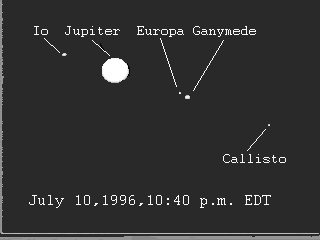
Jupiter and its Moons
July 16, 1996
Image captured and enhanced by:
Simon, Kanata
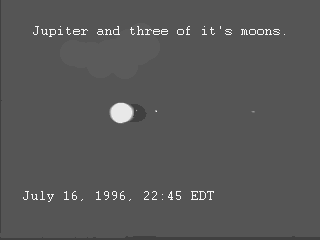
Double Star System, Beta Cygni
Image captured & enhanced by:
Oliver, Oxford, England

Beta Cygni is 380 light years from earth. Also known as Albireo, it is a double star forming the head of Cygnus the swan. Oliver used Corel Photopaint to colour the stars as seen through the telescope.
Composite of Jupiter & its Moons
Mark, Mark, Danny and Gray
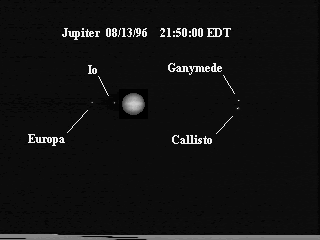
This image was created by "pasting" two images together. The first image used the prime focus of the telescope which produces an overexposed image of Jupiter (no detail on planet), but captures the satellites. The second uses "eye piece projection" to capture some detail on the planets surface. Using Corel Photopaint we scaled the detailed image of the planet and pasted it over the overexposed image.